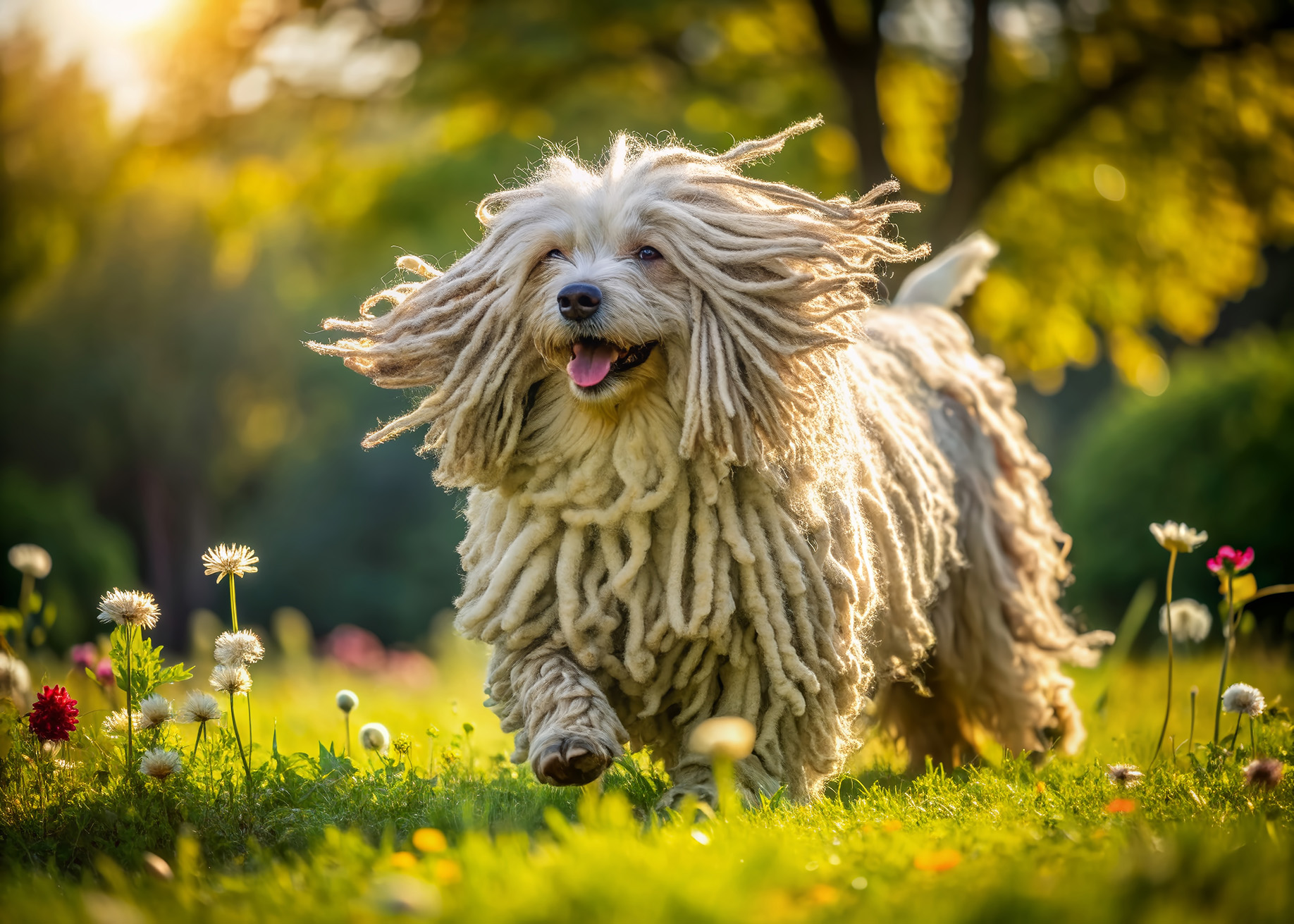Puli

Description
The Puli is a unique and strikingly agile herding dog known for its distinctive coat and energetic personality. Originating from Hungary, this ancient breed has a history that spans over a thousand years. The Puli was primarily used for herding and guarding livestock, particularly sheep and cattle, in the rugged terrain of Hungary. Known for their intelligence and keen herding instincts, Pulis were invaluable to Hungarian shepherds, often working in challenging environments and performing tasks such as rounding up flocks and protecting them from predators. Today, the Puli is still used for herding, but it has also gained popularity as a companion dog due to its loyal and affectionate nature.
Physically, the Puli is a medium-sized dog with a compact, muscular build. Standing between 16 and 17 inches tall at the shoulder and weighing between 25 and 35 pounds, the Puli is strong, agile, and well-suited for the fast-paced demands of herding. One of the breed's most distinguishing features is its coat, which consists of long, corded fur that forms thick, rope-like dreadlocks as the dog matures. This unique coat serves as protection against harsh weather and helps the Puli blend in with the sheep it guards. The coat requires regular maintenance to prevent matting and to keep it in good condition. Underneath the coat, the Puli has an alert, expressive face with dark eyes and perky ears, contributing to its intelligent and alert appearance.
Temperamentally, the Puli is an intelligent, energetic, and independent dog with a strong desire to work. Known for its exceptional problem-solving abilities, the Puli is highly trainable, though it can sometimes be independent or stubborn due to its herding background. They are very devoted to their families and are often protective, making them excellent watchdogs. Pulis are typically friendly and social with family members, and they tend to get along well with children and other pets, although their herding instincts may sometimes lead them to "herd" family members or smaller animals. Because of their high energy levels and intelligence, Pulis need plenty of physical and mental stimulation to remain happy and healthy.
The Puli thrives in active homes where it can get regular exercise and have a job to do. Whether herding livestock, participating in dog sports like agility and obedience, or engaging in outdoor activities such as hiking, the Puli excels when it is mentally and physically challenged. They are a great choice for owners who are willing to invest time in training and grooming, as the Puli’s intelligent and independent nature requires consistent engagement. With their unique appearance, vibrant energy, and hardworking disposition, the Puli remains a beloved breed among those who appreciate its heritage and versatility as both a working dog and a loyal companion.
History
The Puli is an ancient herding breed with roots that trace back over a thousand years to the Magyar tribes of Central Asia. These nomadic people brought the ancestors of the Puli with them to the Carpathian Basin, where the breed became an integral part of Hungarian shepherding culture. Known for their intelligence, agility, and distinctive corded coat, Pulis were highly valued for their ability to herd and guard livestock, particularly sheep, in the rugged landscapes of Hungary. Their natural herding instincts and close bond with shepherds made them indispensable working dogs.
The Puli's corded coat, one of its most striking features, served a functional purpose in its early history. The dense, woolly cords provided protection against harsh weather and predators, while also blending with the sheep they guarded, offering a level of camouflage. This unique coat, along with their agility and stamina, enabled the Puli to perform its duties in challenging conditions. The breed’s smaller size compared to other herding dogs allowed it to maneuver nimbly among livestock.
By the late 19th and early 20th centuries, the Puli’s numbers began to decline due to modernization in agriculture and the introduction of other herding breeds. However, Hungarian breeders took steps to preserve the breed and its working traits. The Puli was officially recognized in Hungary in 1915, and breed standards were established to ensure its distinct characteristics. The breed gained international attention when it was exhibited at European dog shows in the 1920s and 1930s.
Today, the Puli is celebrated not only as a herding dog but also as a loyal and playful companion. While it remains an active working dog in some regions, it has also gained popularity in canine sports such as agility and obedience. The breed’s history reflects its adaptability and the dedication of those who have worked to preserve its unique heritage and extraordinary appearance.
Colors
• Black
• Brindle
• Brown
• Cream
• Rust
• Silver
• White


